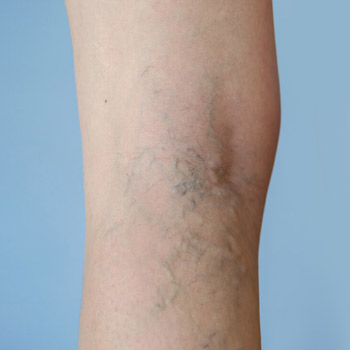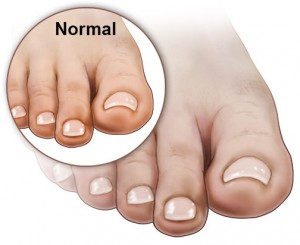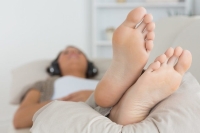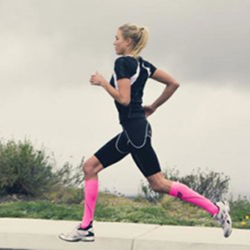Do your feet feel cold and numb, even in the middle of summer?
Are your lower legs and ankles swollen?
Cold, numb feet and swollen lower legs and ankles could be a sign of poor circulation.
Symptoms and complications of insufficient blood circulation often occur in the lower leg and foot because they are located so far from the heart.
What can you do to improve your situation?
Might wearing compression socks be the answer to your problems?
(What are compression socks anyway?)
If so, what are the best socks for circulation?
To answer these and other questions you might have, we must answer why poor circulation occurs in the first place.
Who Are At Risk And What Causes Poor Circulation?
Some people are more at risk than others. By itself, poor circulation is not an immediate cause for alarm; it is not fatal or incurable.
However, once left untreated, poor circulation in the legs and feet can lead to blood clots, varicose veins, diabetes, or peripheral artery disease (PAD). In particular, PAD causes the arterial passageways to narrow, which can further worsen blood flow.
Although not fatal, our feet can also get swollen due to poor circulation. Since our feet carry the weight of our whole body, this situation can be excruciatingly painful!
Several factors can cause poor circulation:
- Insufficient circulation can occur to people who sit or stand for long periods
- In some cases, poor circulation is a sign of an underlying health condition such as obesity or higher than normal blood pressure
- Poor circulation can also stem from diabetes because it increases the likelihood of other conditions
- Inadequate blood circulation can also be a sign of poor overall cardiovascular health

What Are The Symptoms Of Poor Blood Circulation In The Feet?
Poor circulation is not a disease. Instead, it is a symptom of an underlying problem. Fortunately, there’s no need to worry since it can be treated in various ways, including simple lifestyle changes. Not everyone suffering from inadequate circulation experiences similar symptoms, so it is sometimes difficult to identify.
Some of the most common symptoms include:
- Constant coldness in your feet (even if it’s not winter!)
- Numbness
- Painful cramping or discomfort in the feet and legs
- Slow wound healing
- Ulcers around your toes and feet
- A prickling sensation
- Feeble pulse in the legs or feet
- Hair loss or slow leg growth
- Pain and aching in your calves while standing or walking
When you notice any of these symptoms, talk to your healthcare provider. He or she can identify the causes and recommend appropriate treatment, which often includes compression therapy.
The most important thing is to stop blood clots before they start.
How Do Compression Stockings Improve Poor Circulation?
Compression socks work and improve poor circulation by squeezing the muscles and blood vessels. This causes contractions that help the blood to move more efficiently through the leg and back to the heart. With regular use, these socks offer relief from painful, swollen legs brought by cardiovascular problems.
Compression socks and stockings typically feature graduated pressure that is tightest at the ankle and weaker further upwards closer to the heart. They are unlike leggings, for example, that has a uniform fit.
Compression is measured in millimeters of mercury, or noted as mmHg.
Since there are many available levels of compression, you should talk to your doctor about which one will be best for you. Your doctor will also advise you on how long to wear the socks every day, although most people benefit from wearing them throughout the day.
Compression socks are also worn by athletes to increase the supply of oxygen-rich blood in the muscles during exercise and workouts. They are especially good during higher intensity activities.
By improving your circulation, compression socks also help in the recovery phase during post-workouts and protect tissues from swelling, pain, and damage.
The Best Compression Socks For Poor Circulation
The sheer number of compression sock styles and brands can make it hard to decide which one to get. Many of the best compression socks are made to have a unisex fit. Some, however, are specifically designed compression socks for large legs. They are also available in a wide variety of designs and colors.
How To Improve Poor Blood Circulation
A simple way to improve poor blood circulation is by wearing compression socks.

In addition to compression gear, your doctor may also suggest some lifestyle changes such as:
- Trying to avoid sitting in one place for a long period of time
- If you work at your desk, stand up several times throughout the day
- Exercise – even simple foot exercises can help
- Quit smoking
- Eating a healthy diet, getting rid of some items in your diet, or sticking to healthier recipes
- Some weight loss
- Taking Gingko supplements (recommended by some)
- Making appropriate changes to your wardrobe. Clothes that are exaggerated in tightness can impede circulation.
It is important to remember that, if left untreated, poor circulation can result in ugly varicose veins or even a heart attack, stroke or amputation.
Make sure you follow your doctor’s advice and wear your recommended compression gear so you can get pain relief and avoid these more serious problems.
How To Choose The Correct Compression Socks And Improve Blood Circulation
Now that you understand what poor circulation is and how it can be mitigated by wearing the right gear, do you remember how we asked the question “what are the best socks for circulation?” Here are some tips when picking a pair for yourself.

Tip 1 – Snug but not tight
The best compression socks for you are those that are snug but not too tight. Avoid styles that have an elastic band at the top as these hinder proper circulation.
Tip 2 – Get the right pair of socks
Make sure you have gear appropriate to your activity and the season. You will want different socks for cold weather and warm weather, for example. You may also need different socks for formal and casual wear or different socks for sleeping. Get a pair (or six!).
Tip 3 – Ask your doctor
Talk to your doctor about how to correctly put on your compression socks. Since they work by offering different compression levels at different parts of the leg, it is important that they are worn the right way.
These are generally made of a mix of rubber, Lycra, nylon and spandex. The tightness can make the task of getting them on and off seem daunting. Your doctor can show you the best techniques, including how to ensure there are no folds or wrinkles. They should also be able to recommend what’s best overall for you.
Tip 4 – Socks have different compression levels
You also need to make sure you purchase the items that offer the right level of compression for your condition. Typically, they are available in the ranges of 8-10 mmHg to 40-50 mmHg.
Keep in mind that a prescription is required for socks that offer more than 20 mmHg compression. While some compression is always good, you should never overdo it. Your doctor can give you more advice on this.
Tip 5 – Wear them during the day; remove them at night

Compression socks work best when worn throughout the day and then removed at night. Don’t overuse them; give your legs a rest especially during bedtime. If you find it uncomfortable to do that or wear them as otherwise prescribed, give your doctor a visit or call. You may need a different size or compression level.
Tip 6 – Wearing socks while exercising

Wear your compression gear during exercise. Both athletes and those with underlying medical conditions can benefit from improved circulation. Athletes who wear compression gear find them useful for a quick recovery.
Tip 7 – Wearing socks at work

It is incredibly important to wear compression gear while at work if your job requires you to sit and stand for long periods of time. Medical-grade compression socks will deliver the most benefits in these situations as they ease leg fatigue, prevent edema and stop formation of new varicose veins.
Most importantly, you can improve circulation with pressure stockings.
